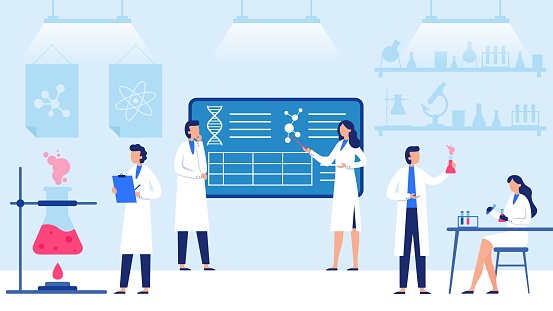Blog
Two Sides of the Same Coin: From Research to Publishing
Published by Jocelyn Solis-Moreira, MS, Digital Editorial Assistant • 4 years ago
Published by Jocelyn Solis-Moreira, MS, Digital Editorial Assistant • 4 years ago

Studying neuroscience in graduate school allowed me to learn the wonders of the brain—a complex and amazing organ responsible for our behavior, emotions, and essentially, our conscious life. But despite its importance in our lives, the brain is still shrouded in mystery. As a scientist in training, I performed experiments that involved dissecting and analyzing the brain. Working in a lab for hours on end, it’s easy to become pigeonholed into learning only the specifics of your research project. The reality is that the life of a scientist involves monotonous laboratory tasks and dealing with failed experiments to finally find the one that does work.
It took me 3 years to come to the realization that while I enjoyed learning about science, I didn’t enjoy the bench work. The idea of becoming a science editor first came to mind when I taught a college course and received compliments from students on my edits on their term papers. As I wrapped up my lab projects, I decided to explore if an editorial career would be a good fit for me.
Currently, I am finishing up my second month at Harborside and I’ve seen my scientific training translating into a lot of the work I do on the journal JCO Oncology Practice and the news site JNCCN 360. My time reading scientific literature and writing about my research in graduate school helped me to become familiar with the medical jargon I read while sourcing journal manuscripts and assists me in copyediting articles produced by our freelance team.
While I am able to read through dense scientific language, working at Harborside has helped me edit and write for clarity. Scientists are typically taught to write in passive and detailed language to convey their research findings—however, this form of writing is definitely geared toward a narrower audience. This can isolate scientists outside that particular field of work, along with medical professionals that may benefit from this research. Because of this, whenever I proofread a document, I have learned to keep in mind: “What’s the big picture, the bottom line?”
In my opinion, one of the biggest takeaways from my research training is the value of teamwork. Research requires working with others to successfully execute a study from start to finish. This meant that we had to be open to asking questions and proposing creative ideas to make the best experiment. While I’ve traded my microscope for a Macbook, I have found the same collaborative spirit in the Harborside team. At the end of the day, research and publishing share the same mission—increasing scientific knowledge. Scientists test hypotheses and gather evidence, while editors work to best communicate these findings to society.
I would be lying if I said that I don’t miss dissecting brains every now and then, but I am happy that I get to edit and write about so many different scientific topics. I still think like a scientist—if you ask my bosses, I ask A LOT of questions—but I’ve learned to share this information in a more digestible format to update clinicians on the latest research discoveries. It’s truly the best of both worlds.